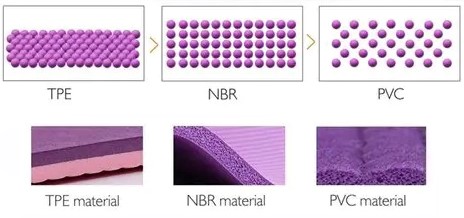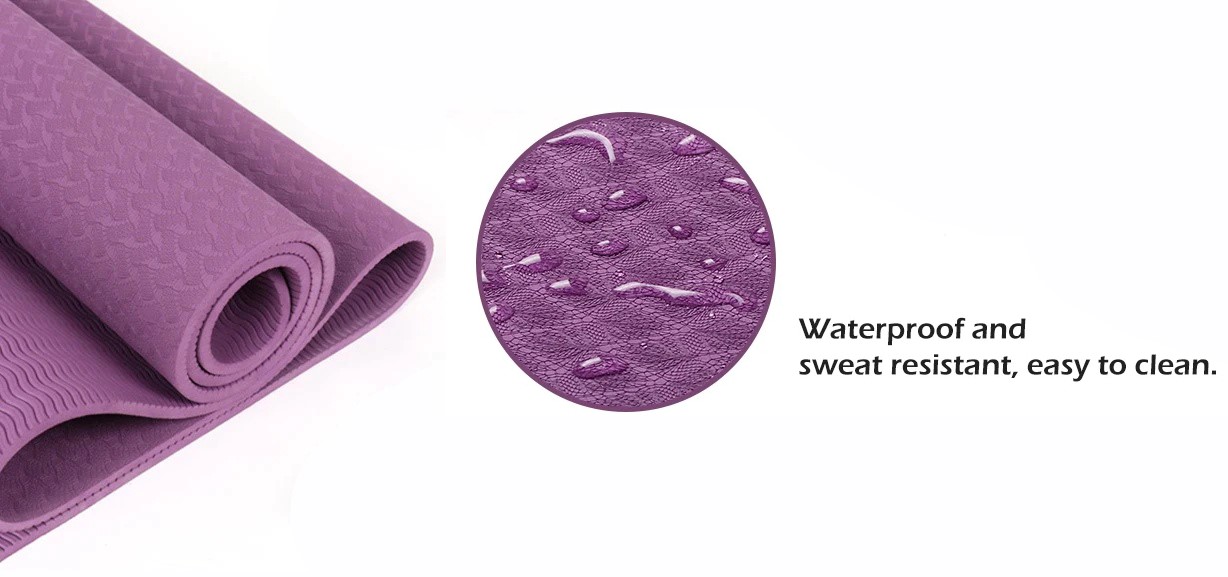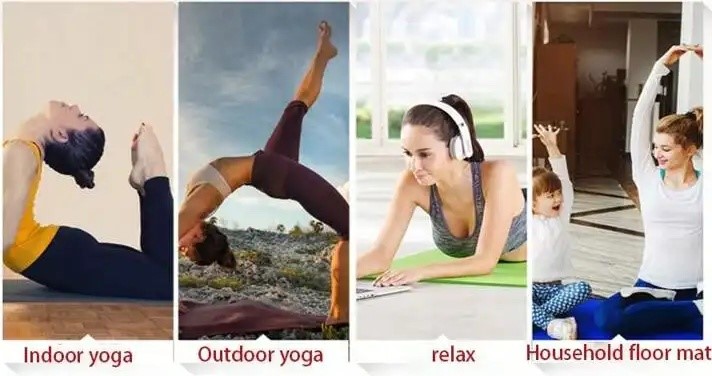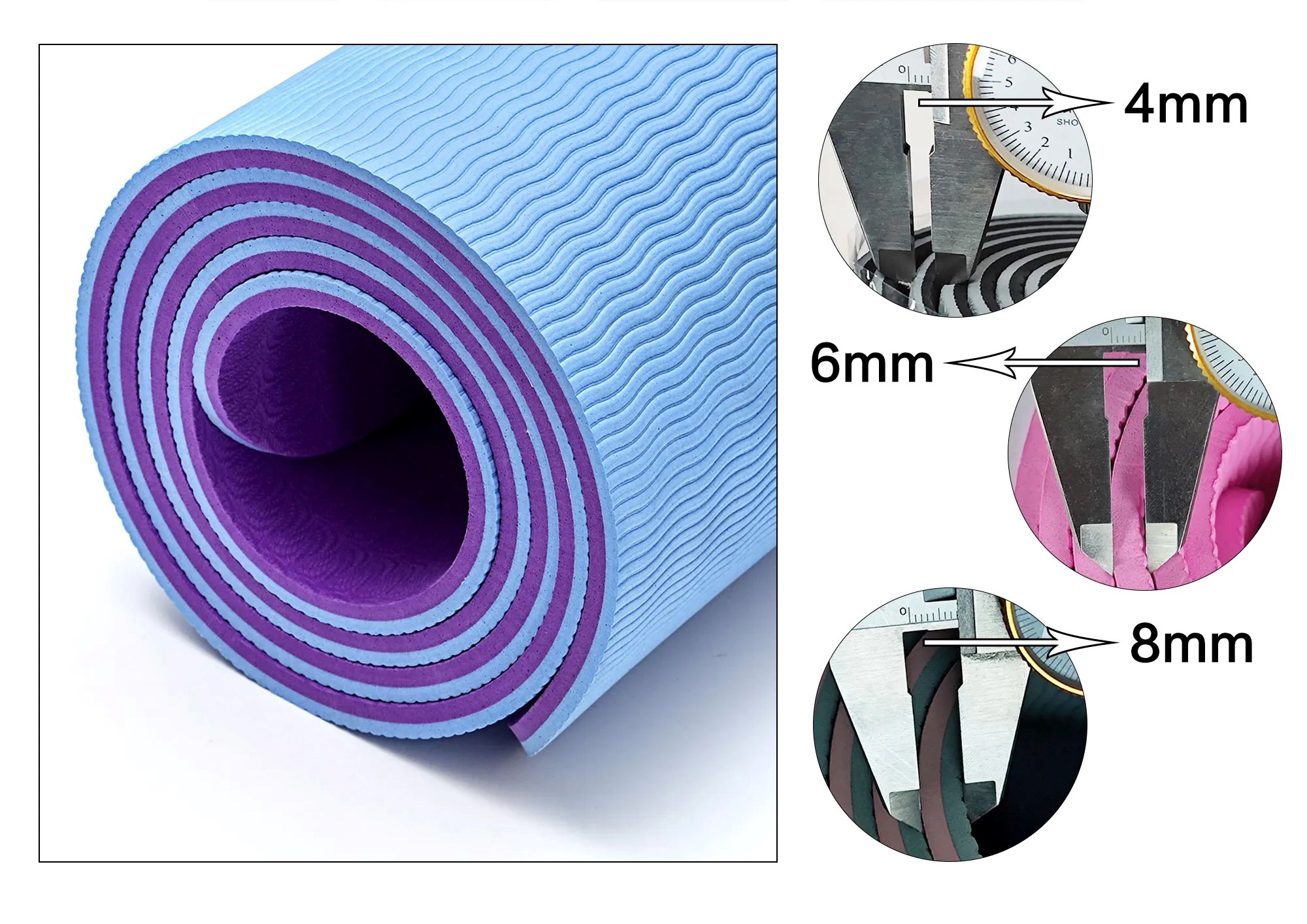Yoga mats are an integral part of any yoga practitioner's toolkit, providing the necessary support, stability, and comfort during practice. However, the choice of yoga mat material can have a profound impact on your practice experience. In this article, we will explore different yoga mat materials, how to use them effectively, and the effects they can have on your yoga practice.

Materials of Yoga mats
Yoga mats come in a variety of materials, each with its unique characteristics and benefits. Some common materials include:
1. Rubber:
Rubber yoga mats are renowned for their outstanding grip and traction. The natural rubber material offers a non-slip surface, ensuring stability and safety during poses. Rubber mats are particularly beneficial for practices that involve sweaty or dynamic movements. The grip provided by rubber mats allows you to hold poses with confidence and focus on your breath, enhancing your overall practice experience.
2. PVC (Polyvinyl Chloride):
PVC yoga mats are known for their affordability, availability, and durability. PVC mats offer good cushioning and support, making them suitable for various yoga styles. However, it is important to note that PVC is a synthetic material and may not be as eco-friendly as other options. Nonetheless, PVC mats serve as practical choices for practitioners who prioritize cost-effectiveness without compromising performance.

3. TPE (Thermoplastic Elastomer):
TPE yoga mats are a versatile and eco-friendly alternative to PVC. TPE is a recyclable material that provides good resilience, cushioning, and comfort. These mats are lightweight and offer excellent grip, making them suitable for beginners and intermediate practitioners. TPE mats provide a supportive and comfortable surface for both gentle and dynamic yoga practices, allowing you to focus on proper alignment and breath control.
4. Natural Fabrics:
Yoga mats made from natural fabrics, such as jute or cotton, offer unique benefits. These mats have a textured surface that enhances grip and provides a more natural connection with the earth. Natural fabric mats may not offer as much cushioning as other materials, but they provide excellent breathability and a sense of grounding during practice. They are ideal for practitioners who prioritize eco-friendliness and enjoy the tactile experience of a natural material.

How to Use Your Yoga Mat Effectively?
Regardless of the material, there are some general guidelines to follow for effective use of your yoga mat:
1. Clean and Maintain: Regularly clean your mat to maintain hygiene and remove sweat or dirt. Follow the manufacturer's instructions for cleaning and maintenance, as different materials may have specific requirements.
2. Proper Alignment: Position your mat on a flat, stable surface and align your body with the edges of the mat during practice. This helps maintain symmetry, balance, and proper alignment in your poses.
3. Grip Enhancement: If you find that your mat does not provide sufficient grip, consider using a yoga towel or spray designed to enhance traction. This can be particularly helpful if you tend to sweat during your practice.

Effects on Your Yoga Practice
The choice of yoga mat material can have several effects on your practice:
1. Stability and Balance: Mats with good grip and traction, such as rubber mats, help you maintain stability and balance during poses, allowing you to stay present and focused.
2. Cushioning and Support: Mats made from foam or rubber materials offer varying levels of cushioning, providing support for your joints and reducing discomfort during challenging or prolonged poses.
3. Comfort and Connection: The texture and feel of the mat can enhance your sense of comfort and connection with the ground beneath you. Natural fabric mats offer a tactile experience and a sense of grounding that some practitioners find particularly appealing.
4. Eco-Friendly Consciousness: Opting for eco-friendly mat materials, like natural fabrics or TPE, aligns your practice with principles of sustainability and conscious living.

Conclusion:
The choice of yoga mat material is a personal decision that can greatly impact your practice. Whether you opt for the outstanding grip of rubber, the affordability of PVC, the eco-friendliness of TPE, or the natural texture of fabrics, each material brings its own unique effects and benefits to your yoga experience. Consider your priorities in terms of grip, support, sustainability, and comfort to choose the material that suits your needs best. With a well-suited yoga mat, you can enhance your practice, deepen your connection to the present moment, and embark on a transformative journey on your mat.
Post time: Jan-22-2024
